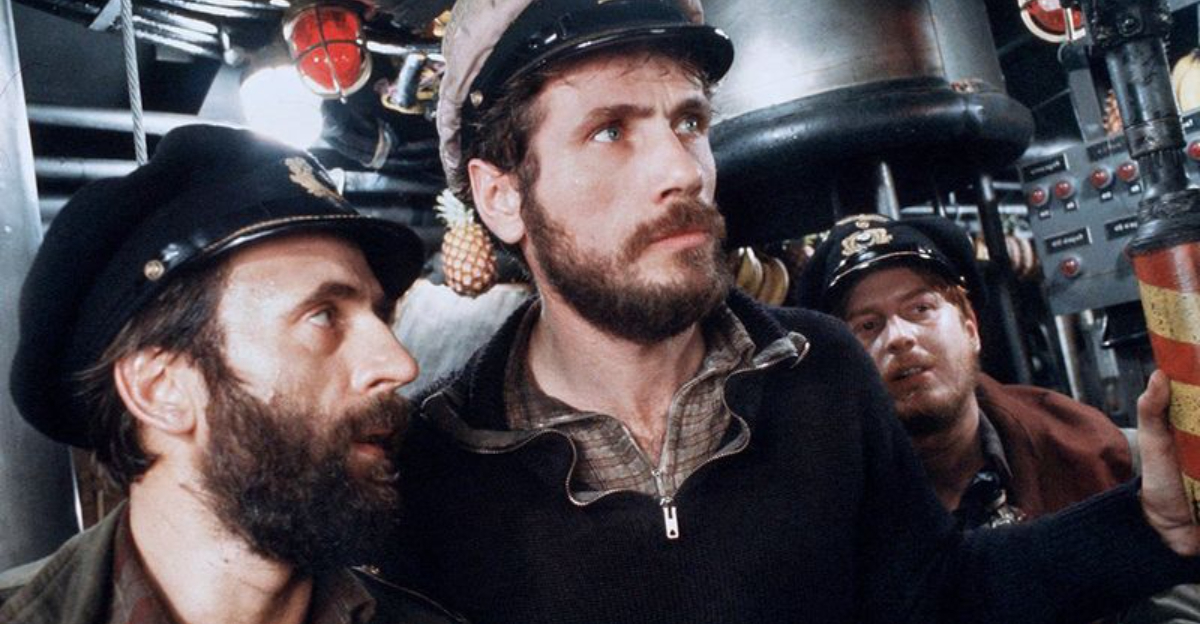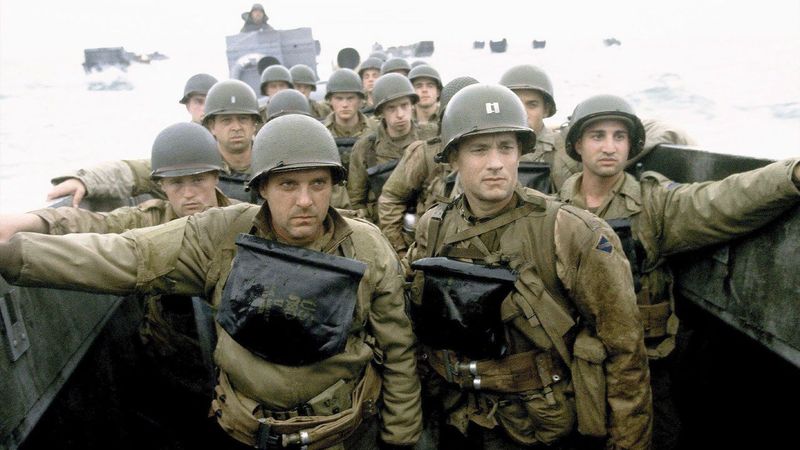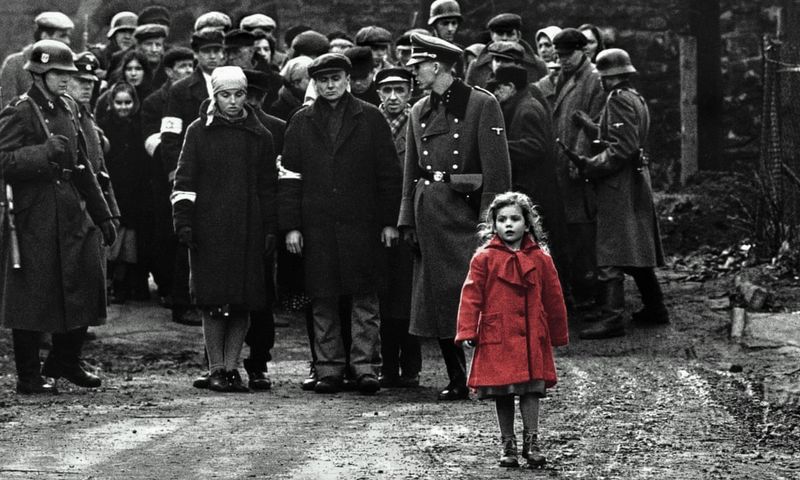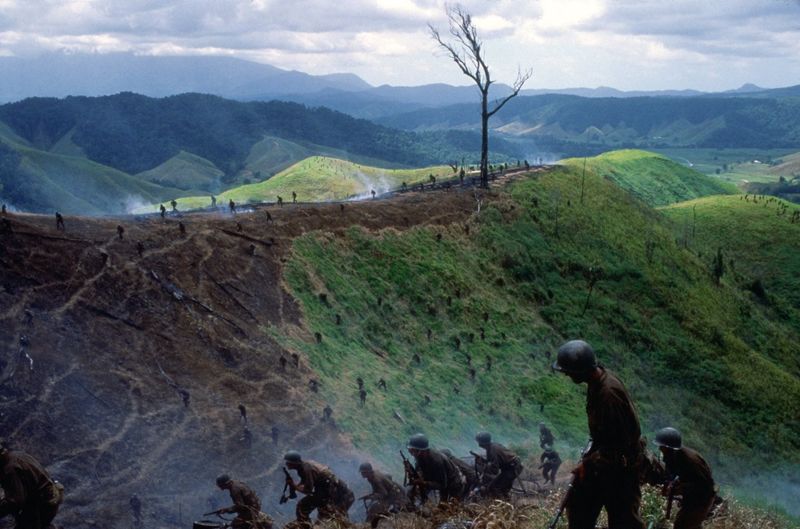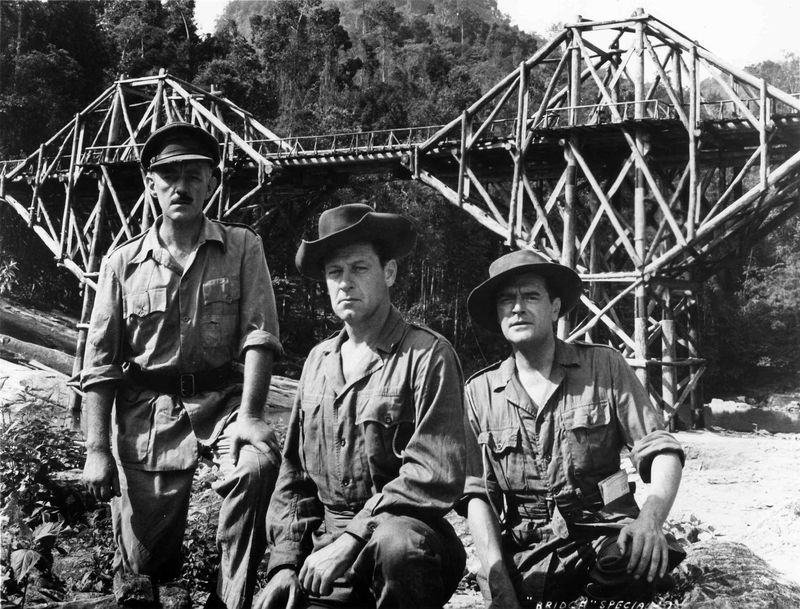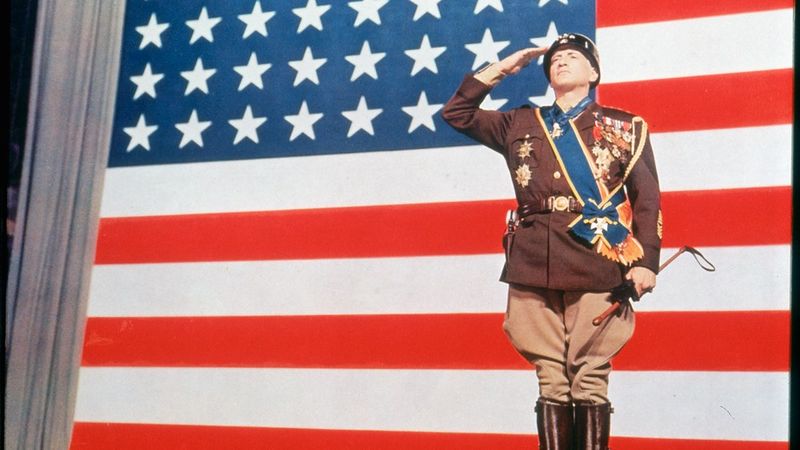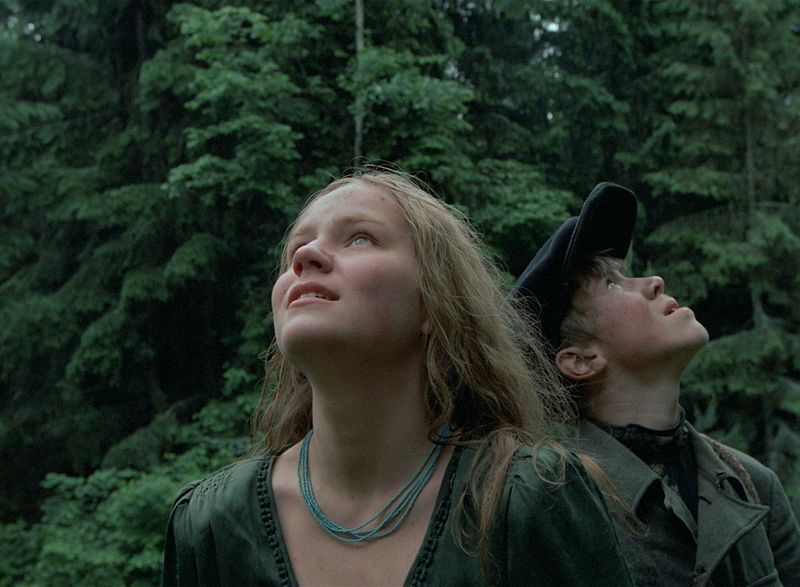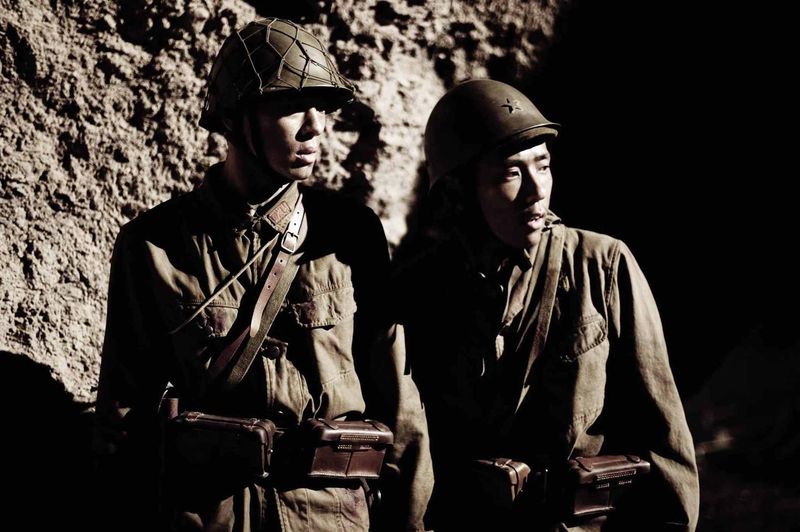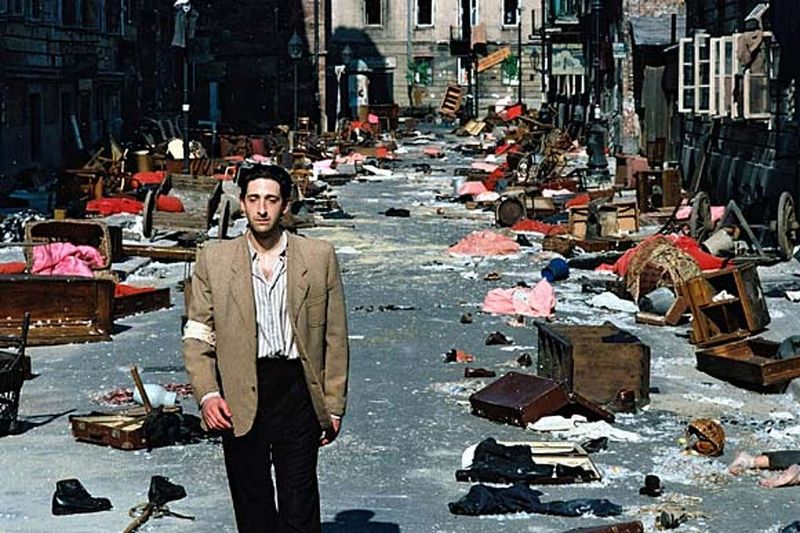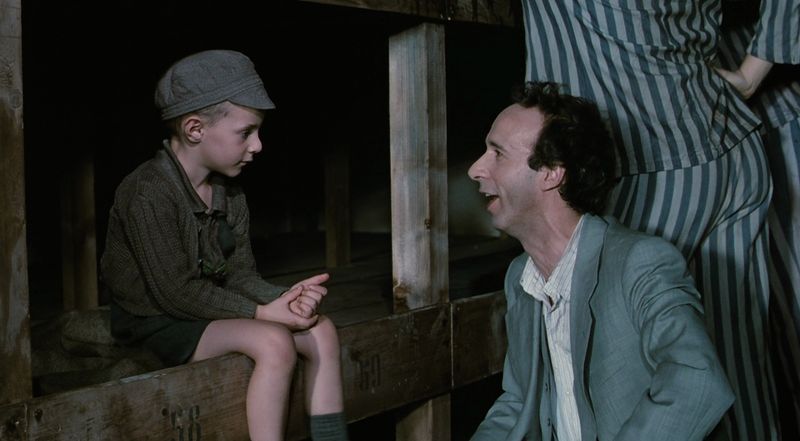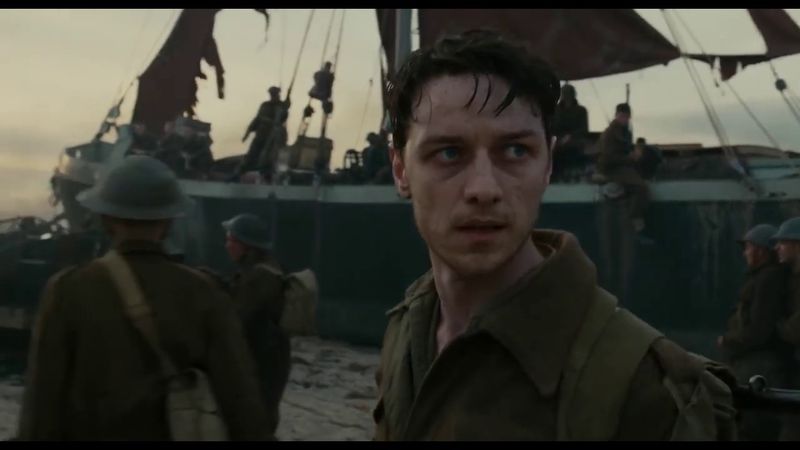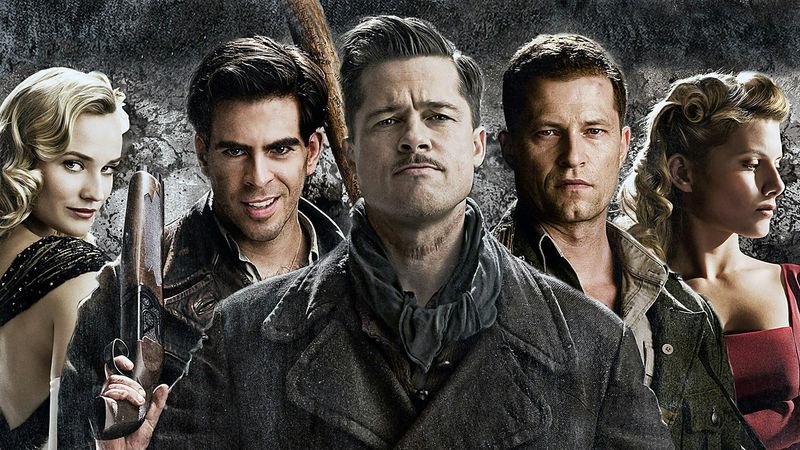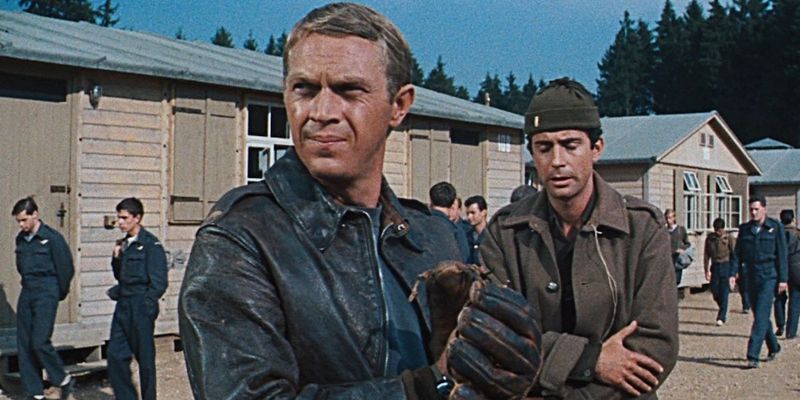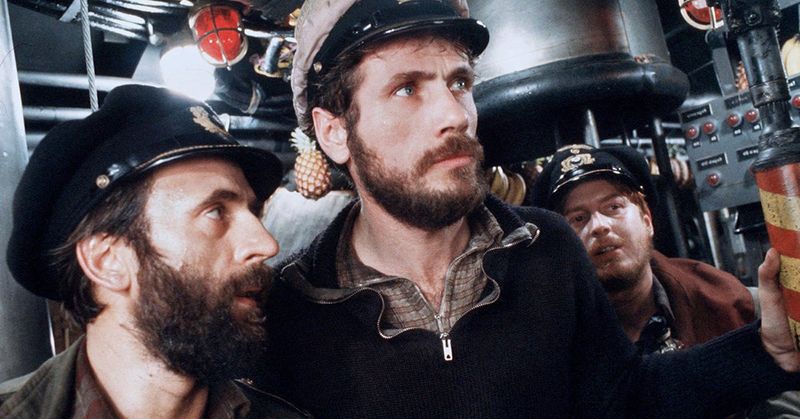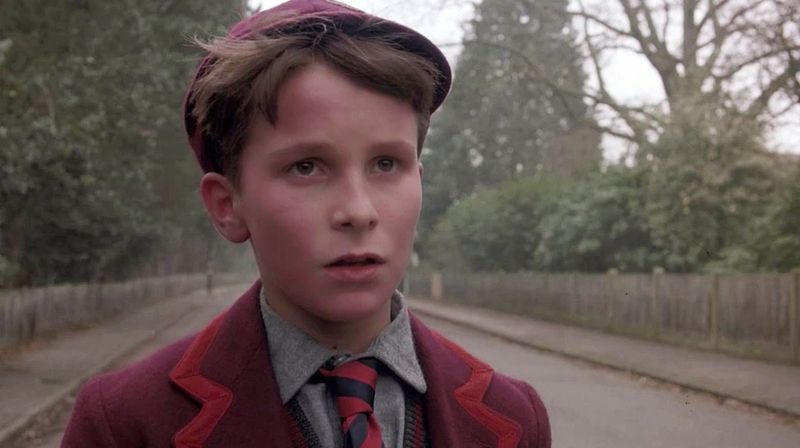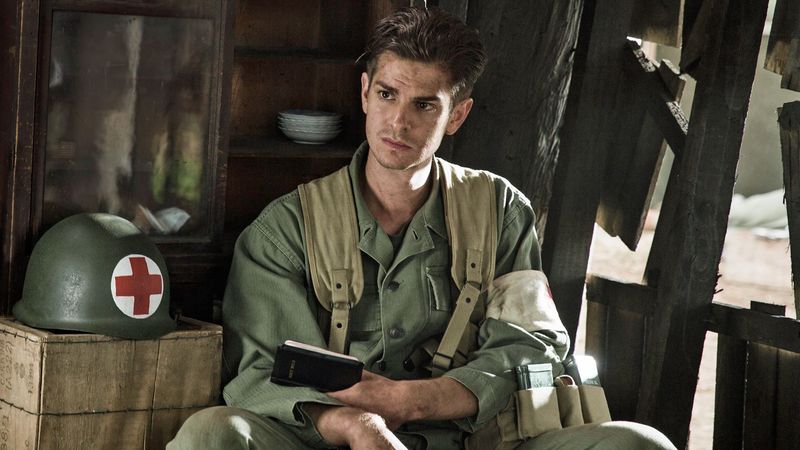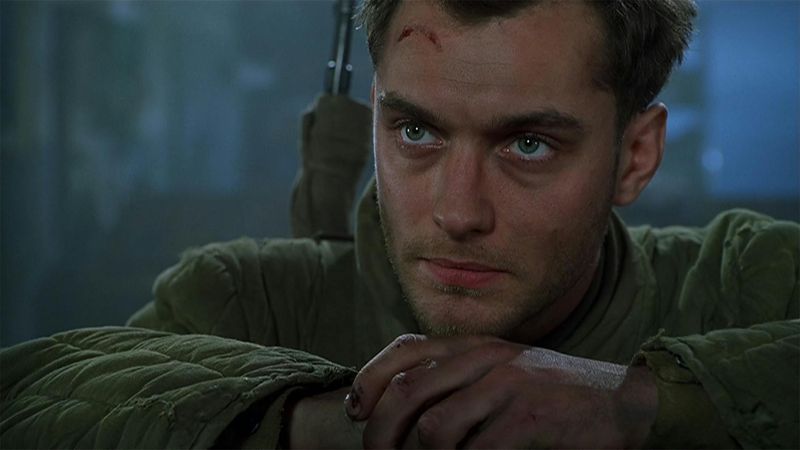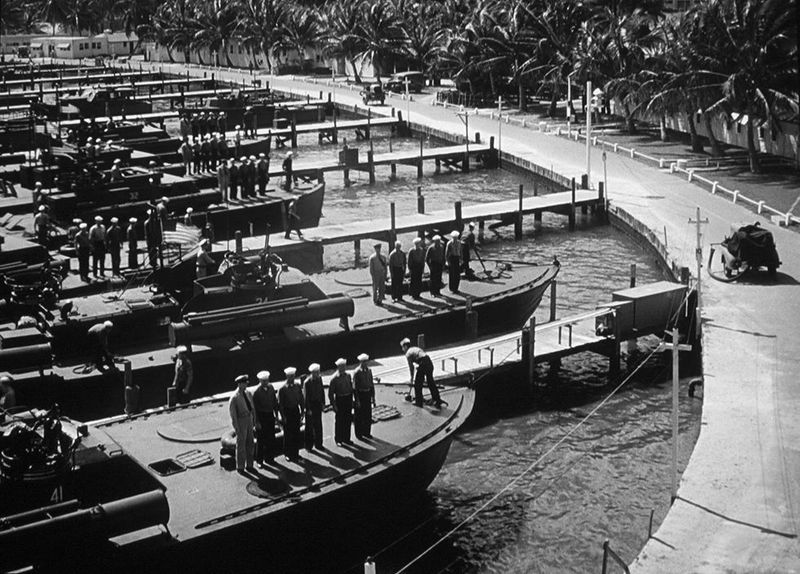World War II remains one of the most covered conflicts in cinema history – but some films do more than just depict battles. These 17 groundbreaking movies changed the way we understand war, trauma, courage, and the moral complexities faced by those who lived it. From brutal realism to haunting introspection, each of these films left an indelible mark on both audiences and history itself.
1. Saving Private Ryan
Saving Private Ryan’s opening sequence stormed into film history, capturing the visceral mayhem of the D-Day landings. The film’s authenticity and emotional depth reshaped war cinema, deeply resonating with veterans. Amidst the stormy chaos, Spielberg sculpted raw, heartbreaking narratives, blending courage and loss on the battlefield.
The harrowing realism set a new standard for depicting historical events. Characters’ struggles mirrored the broader horrors of war, crafting a poignant reflection on sacrifice.
Its profound impact on audiences made it a timeless classic, forever altering perceptions of wartime heroism and humanity.
2. Schindler’s List
Standing starkly in black and white, Schindler’s List is more than a film; it’s a testament to humanity amidst horror. Telling Oskar Schindler’s tale, Spielberg confronts the Holocaust’s brutal truths. The juxtaposition of hope and despair is masterful.
Schindler’s daring rescue of over 1,000 Jews paints him as a complex savior. Its narrative doesn’t shy from the raw anguish of the Holocaust.
Spielberg’s direction and the film’s haunting score create a deeply moving experience. This cinematic milestone profoundly impacted Holocaust awareness, ensuring memories endure.
3. The Thin Red Line
The Thin Red Line wove poetry with brutality, offering a contemplative gaze at the Battle of Guadalcanal. Malick’s film diverged from typical war narratives, embracing philosophical introspection.
Amidst the lush Pacific landscapes, soldiers grappled with inner turmoil, highlighting nature’s stark contrast to human conflict. Its meditative tone and spiritual reflections distinguished it from action-centric peers.
The film’s visual elegance and existential depth left audiences pondering war’s moral complexities. Malick’s vision redefined war cinema’s potential, journeying beyond battles into the soul’s battlefield.
4. The Bridge on the River Kwai
The Bridge on the River Kwai explored madness and moral ambiguity amidst war’s chaos. Its focus on a bridge built by Allied POWs raised questions about honor and complicity.
Lean’s epic contrasted the rigid British discipline with the grim reality of captivity, creating a compelling narrative. The film’s iconic whistling march became emblematic of its complex themes.
The psychological tension and stunning cinematography made it a cinematic triumph. Its exploration of flawed heroism and obsession challenged traditional war narratives, leaving a lasting impact.
5. Patton
Patton, led by George C. Scott’s electrifying performance, delved into the ego and strategic brilliance of General George S. Patton. The film captured his flamboyant personality and controversial leadership during WWII.
Patton’s complex character was portrayed with nuance, highlighting his passion and flaws. His military genius clashed with his personal demons, offering a multi-faceted view of heroism.
The film’s grand scale and Scott’s commanding presence made it an unforgettable biopic. Patton’s portrayal shifted focus from battlefield victories to the complexities of command.
6. Come and See
Come and See stands as a haunting testament to the atrocities in Belarus during WWII. This Soviet film’s nightmarish imagery and emotional depth created an unforgettable experience.
The protagonist’s journey through war-torn landscapes was harrowing, capturing innocence lost amidst chaos. Its raw depiction of human suffering left audiences stunned.
This cinematic reckoning transcended traditional war narratives, confronting viewers with unfiltered brutality. It redefined the impact war could have on both individuals and cinema itself.
7. Letters from Iwo Jima
Letters from Iwo Jima offered a rare glimpse into the Japanese perspective of the Battle of Iwo Jima. Eastwood’s direction humanized America’s wartime adversaries, fostering empathy and understanding.
The film’s intimate character studies and poignant letters revealed personal stories amid the chaos. The emotional complexity and ethical dilemmas faced by soldiers were powerfully portrayed.
Its nuanced portrayal of the enemy redefined war narratives, highlighting shared humanity. Letters from Iwo Jima remains a powerful reminder of war’s universal impact.
8. The Pianist
The Pianist, directed by Roman Polanski, chronicled the survival of Jewish pianist Władysław Szpilman in Nazi-occupied Warsaw. Its unflinching portrayal of the Ghetto’s horrors was poignant and haunting.
Brody’s Oscar-winning performance embodied resilience and silence amid chaos. The music and cinematography captured the stark contrast between beauty and destruction.
The film’s emotional depth and historical accuracy offered a profound reflection on human endurance. Its impact on Holocaust awareness and understanding remains significant.
9. Life Is Beautiful
Life Is Beautiful, an Italian masterpiece, blended humor with heartbreak. The story of a father protecting his son’s innocence in a concentration camp was both poignant and uplifting.
Benigni’s direction and performance balanced tragedy with whimsy, creating a unique narrative. The film’s imaginative approach to survival and hope redefined wartime storytelling.
Its touching portrayal of love and resilience resonated with audiences worldwide, leaving a lasting impression. Life Is Beautiful remains a testament to the human spirit’s capacity for joy amidst despair.
10. Atonement
Atonement, though not a traditional war film, captured the chaos and despair of Dunkirk through a mesmerizing unbroken shot. This scene became emblematic of war’s broader impact.
The film explored themes of love and guilt, transcending its historical setting. Its narrative complexity and visual beauty intertwined with a haunting score.
Atonement reframed war as an emotional battleground, expanding the genre’s scope. Its poignant storytelling and cinematic artistry made it a memorable contribution to war cinema.
11. Inglourious Basterds
Tarantino’s Inglourious Basterds turned WWII into a stylized revenge fantasy. Its daring narrative challenged conventions with audacity and wit, raising questions about violence and justice.
The film’s dark humor and sharp dialogue created a unique cinematic experience. Its revisionist history and bold storytelling left audiences captivated.
Inglourious Basterds’ controversial approach to war cinema pushed boundaries, offering a fresh perspective on storytelling. Its impact on the genre remains influential and enduring.
12. The Great Escape
The Great Escape dramatized a real POW escape with style and suspense. Its thrilling narrative and memorable characters became iconic in war cinema.
The film balanced adventure with the somber reality of sacrifice, creating a compelling blend of entertainment and reflection. Its final scenes highlighted the cost of freedom.
This classic redefined how WWII stories could be told, merging excitement with tragedy. Its legacy endures as a benchmark for wartime storytelling.
13. Das Boot
Das Boot submerged audiences into the claustrophobic world of a German U-boat. Its tense atmosphere and psychological depth offered a fresh perspective on submarine warfare.
The film’s attention to detail and immersive realism made viewers feel the crew’s anxiety and uncertainty. The sense of impending doom was palpable, making it a gripping experience.
This German masterpiece challenged the typical portrayal of enemies, fostering empathy and understanding. It redefined how war’s psychological toll could be depicted, becoming a benchmark for naval films.
14. Empire of the Sun
Empire of the Sun, featuring a young Christian Bale, offered a child’s perspective on war’s disruption. The film’s dreamlike intensity captured the innocence and resilience of youth amidst chaos.
Spielberg’s direction wove a poignant narrative, exploring themes of survival and adaptation. The film’s visual splendor and emotional depth made it a standout in war cinema.
Empire of the Sun remains a powerful exploration of war through a child’s eyes, leaving a lasting impact on audiences.
15. Hacksaw Ridge
Hacksaw Ridge showcased a different kind of heroism. Mel Gibson’s biopic of Desmond Doss, a conscientious objector, highlighted bravery without violence. His Medal of Honor-winning actions inspired many.
The film’s intense battle sequences contrasted with Doss’s peaceful resolve. This juxtaposition created a compelling narrative of courage and faith.
Hacksaw Ridge redefined wartime heroics, focusing on saving lives instead of taking them. Its impact on audiences was profound, celebrating an unsung hero of WWII.
16. Enemy at the Gates
Enemy at the Gates brought the Eastern Front into focus, dramatizing sniper warfare in the Battle of Stalingrad. Its depiction of rivalry and survival was intense and gripping.
The film highlighted the psychological tension between snipers, capturing the essence of warfare’s personal battles. Its gritty realism and historical context added depth to the narrative.
Enemy at the Gates broadened Western audiences’ understanding of the Eastern Front, contributing to war cinema’s rich tapestry.
17. They Were Expendable
They Were Expendable, released shortly after WWII, portrayed heroism amidst retreat. Ford’s direction captured the courage and sacrifice of U.S. PT boat crews in the Philippines.
The film’s focus on uncertainty and perseverance offered a fresh perspective on wartime narratives. Its somber tone and realistic portrayal resonated with audiences.
They Were Expendable set a precedent for depicting the complexities of heroism and retreat in war cinema. Its legacy continues to influence filmmakers and audiences alike.
